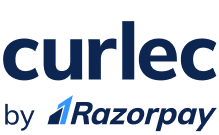As business owners, entering a new year means more than gym memberships and quitting bad habits. Personal goals aside, there are also New Year’s resolutions for the business. To provide better customer service, improve engagement on your social media channels and optimise cash flow once and for all, to name a few.
Many of these goals tie in to the overall cash flow of your business, which ultimately affects your daily operations and can become just as disconcerting as general revenue problems.
The consequences of poor cash flow are detrimental and can pave the way for a path to hindered growth, low profit margins and at worst, business failure. Not exactly how you’d want to ring in the New Year!
Yet, a business can still be profitable despite its negative cash flow, which explains why poor cash flow management is still ubiquitous in the majority of businesses, from homegrown startups to multinational corporations.
Sometimes, it’s just habits that stick. Especially in a nation like Malaysia, where payment terms are seen as more of an option than a priority, and getting paid on time is a rare case for joy.
But this new year, make it a point to optimise business cash flow by leaving behind these bad practices in the previous year and implement these techniques to optimise cash flow.

Being afraid to approach clients for late payments
Instead: Offer discounts for early payments and penalties for late payments, implement automated solutions.
Undoubtedly, one of the biggest factors which affects the ability to optimize cash flow within a business is the bad practice of late payments.
It’s not uncommon for invoices to go unpaid for months, with buyers completely ignoring the payment terms stated in black-and-white and sellers not following up consistently, resulting in an increase in tension within the relationship.
Alternatively, for those on the buyer’s end, late payments can result in a loss of trust, endless frustration and the altogether loss of a client. So, what are some cash flow management strategies that can help break through this vicious cycle?
One solution is offering incentives for buyers who are early or on-time with payments, and implementing high interest rates for late payments exceeding the due date.
Despite this, many buyers will still not abide by the payment terms. An even better solution? Avoiding the topic of confrontation altogether by automating the invoicing and payment processes.
Direct Debit, for example, can help to collect payments from the buyer on date every month, mitigating the need to waste time, resources and manpower to follow up Every. Single. Time.
Forking out unnecessary funds and wasting resources
Instead: Save time and money by using Direct Debit to collect monthly payments.
Ask yourself this, how much time and money are you really spending every month on late payers?
You might not want to know the answer. Most recently, a US-based study from Sage reports that late payments are costing SME’s up to $3 trillion annually. That’s 12 zeros.
The report states that over 30% of SME’s viewed the client relationship as the number one barrier hindering them from chasing payments as aggressively as they’d like to.
“As a consequence of late payments, 16% in the US say they will struggle to pay bonuses around the festive period, and nearly 25% expect an impact on staff pay.”
Employee work hours, overtime, admin fees and the other extra costs can be almost invisible at times. That is, until it starts to pile up.
What can you do about it? One of the most efficient ways to optimize cash flow would be to use Direct Debit to make the payment collection process effortless and essentially, let it do all the dirty work for you.
Not managing your inventory well
Instead: Forecast well to reduce costs.
For many businesses, better business cash flow can even stem from optimizing inventory management.
Accurate forecasting for one, can ensure that you’re meeting demand while optimising inventory levels to maintain healthy net working capital.
Another method which has allowed previously irreducible cost centres to see gradual decreases over time is by supplementing robust SOPs (standard operating procedures) with technical competence in data analytics.
In many industries, expertise in supply chain analysis has also evolved to a point where the usage of advanced machine learning algorithms is regularly employed to optimise just-in-time inventory.
Sometimes, the issue may be, to put it simply – human error. Say, a miscount in inventory or erroneously processed orders. Automating such processes by using Curlec to pay for your orders on a regular schedule can help to reduce the risk of human errors. Find out how to do that by contacting us below! After all, we’re only human right?












